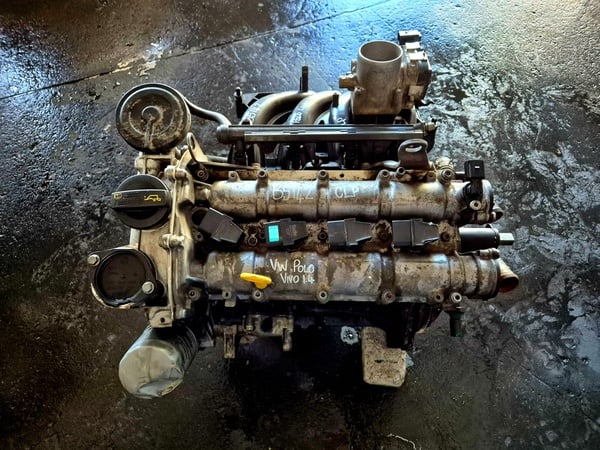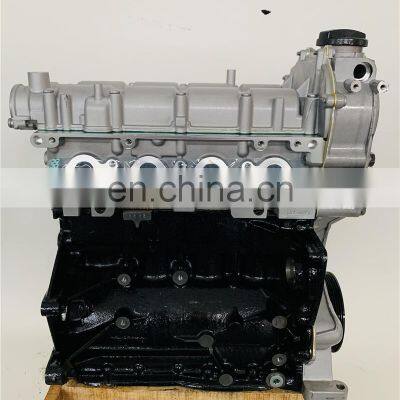Get a high-efficiency clp engine for your equipment.
Get a high-efficiency clp engine for your equipment.
Blog Article
How a Clp Engine Can Boost Efficiency in Different Industries
The introduction of CLP engines notes a significant change in functional effectiveness throughout various markets, driven by their capacity to enhance fuel consumption and decrease downtime. Industries such as manufacturing and logistics stand to get significantly from their durable layout and constant power output, which assure to streamline operations and enhance productivity. As organizations increasingly focus on sustainability alongside efficiency, the role of CLP engines comes to be also much more vital. What continues to be to be seen is just how these improvements will form the future landscape of industrial procedures and their influence on broader economic fads (clp engine).
Overview of CLP Engines
CLP engines, or Constant Fluid Propellant engines, represent a substantial innovation in propulsion modern technology, especially for room applications. These engines make use of a constant feed system that enables the sustained expulsion of propellant, resulting in improved performance and efficiency contrasted to traditional strong or hybrid propulsion systems. By preserving a consistent circulation of liquid propellant, CLP engines can achieve more precise thrust control, which is critical for maneuvering spacecraft in numerous mission scenarios.
The style of CLP engines integrates sophisticated products and innovative fuel monitoring systems. clp engine. This leads to decreased weight and boosted dependability, necessary aspects for long-duration space objectives. In addition, the continual operation minimizes the risk of combustion instability, a typical difficulty in standard rocket engines.

Advantages in Manufacturing
The manufacturing of Constant Liquid Propellant (CLP) engines provides several significant advantages that boost both effectiveness and cost-effectiveness. Among the primary benefits is the structured production process, which minimizes the intricacy connected with typical propulsion systems. By making use of liquid propellant, manufacturers can accomplish higher precision in engine efficiency, leading to enhanced energy output and minimized waste.
Furthermore, CLP engines help with a higher degree of modularity, enabling much easier integration into numerous manufacturing lines. This versatility can significantly decrease lead times and improve total functional versatility. Making use of CLP innovation also often tends to decrease the demand for extensive maintenance because of fewer relocating components, which converts into reduced downtime and functional prices.

Applications in Logistics
Leveraging Continual Liquid Propellant (CLP) engines in logistics supplies significant advantages in functional efficiency and reliability. These engines give a durable service for different transport demands, enabling the seamless activity of products throughout huge distances. The fundamental style of CLP engines allows for consistent power output, which equates into smoother and a lot more predictable transportation routines.
Among the key applications of CLP engines in logistics is in sturdy products transport, where they can drive both ground and aerial automobiles. Their capacity to preserve high efficiency under varying tons problems ensures that delivery timelines are satisfied, consequently enhancing customer satisfaction. Additionally, CLP engines can be integrated into automated logistics systems, promoting real-time monitoring and maximizing route preparation.
Furthermore, the durability of CLP engines reduces upkeep downtime, enabling logistics business to maximize their operational abilities. This is particularly valuable in warehousing operations, where performance in handling and transferring products is crucial. As logistics remains to develop, the integration of CLP engines represents a forward-thinking method that not site here just improves efficiency yet likewise supports the market's expanding needs for reliability and rate.
Effect On Power Performance
Exactly How do Continuous Fluid Propellant (CLP) engines improve energy efficiency in transport? CLP engines make use of a regular flow of fluid fuel, maximizing combustion procedures and maintaining a secure drive output. This style lessens energy losses connected with typical burning engines, where fuel shipment can differ and bring about ineffectiveness.
The constant operation of CLP engines permits a more reliable thermal cycle, leading to greater particular impulse compared to standard engines. clp engine. This converts to minimized gas intake for the same amount of job done, dramatically reducing operational costs throughout various transport fields, including more information aeronautics and maritime sectors
Furthermore, the capacity of CLP engines to preserve ideal efficiency under differing load conditions decreases the need for constant velocity and slowdown, additionally enhancing gas effectiveness. Boosted power performance not only adds to cost savings yet likewise causes decrease greenhouse gas discharges, lining up with worldwide sustainability objectives.
Future Trends and Innovations
Arising improvements in Continuous Liquid Propellant (CLP) engine innovation pledge to transform the landscape of transportation performance and sustainability. As markets pivot toward greener options, CLP engines stand at the leading edge, incorporating ingenious materials and style approaches that boost efficiency while lessening ecological influence.
Among the most promising fads is the adoption of hybrid systems that combine CLP engines with renewable power sources. This harmony can enhance fuel consumption and reduce discharges, lining up with international sustainability objectives. Additionally, advancements in computational liquid dynamics (CFD) are facilitating the design of even more aerodynamically effective engines, causing lowered drag and enhanced fuel performance.
Furthermore, the growth of wise tracking systems is established to enhance operational performances. These systems utilize information analytics and IoT technology to maximize engine efficiency in real-time, guaranteeing that the engines run within their most effective specifications.
As research study remains to explore alternative propellant formulations-- such as biofuels and synthetic fuels-- the future of CLP engines looks encouraging. By harnessing these innovations, industries can not only boost their efficiency yet additionally add dramatically to a cleaner, much more lasting future in transport.
Final Thought
In verdict, CLP engines represent a considerable innovation in performance throughout several markets. The assimilation of innovative materials and less relocating components decreases maintenance needs, while positioning with sustainability objectives settings CLP engines as a critical innovation for the future.
Report this page